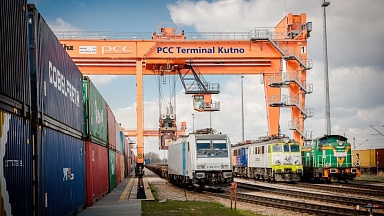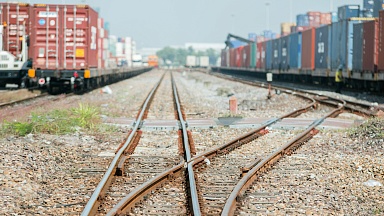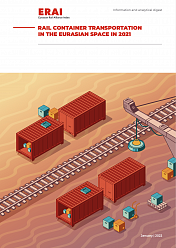Everyone wants their own Silk Road. Nearly a decade after Chinese President Xi Jinping proposed a «New Silk Road», the EU followed Beijing’s lead this week with the launch of an ambitious infrastructure investment programme.
The «Global Gateway», a €300 billion infrastructure spending plan, aims to boost EU supply chains and trade across the world.
‘An alternative to Chinese money’
China was not mentioned in the European Commission’s press release that unveiled details of the new initiative on Wednesday. But it’s difficult not to view the Global Gateway as a European response to the Belt and Road Initiave (BRI), the vast Chinese programme of loans for transportation and digital infrastructure projects across nearly 70 countries, which also extends China’s far-reaching economic sphere of influence.
«This ushers in a more competitive era in development aid. The recipient countries will now have an alternative to Chinese money. It is up to the EU to prove that its aid is better,» said Andrew Small, from the German Marshall Fund, in an interview with FRANCE 24.
Brussels hopes to focus on the differences between the Chinese and European ways of doing business, starting with the nature of funding. «On the Chinese side, the structures of funding come mainly from loans, while the European programme will rely on both public and private sector investment,» said Francesca Ghiretti, from the Berlin-based Mercator Institute for China Studies, in an interview with FRANCE 24.
The EU may be in catch-up mode, but it comes to the table with financing that is transparent and more favourable, especially to developing countries. Critics of the BRI say Chinese loans are a way to create an economic dependence on Beijing among recipient countries.
Sri Lanka’s experience with the Hambantota port is often cited as an example of China’s controversial «debt trap», which pushed the South Asian nation, when unable to repay its loan, to hand over a majority stake and 99-year lease on the port to a Chinese firm.
Brussels also insists on financing that is «based on values such as transparency, respect for the law and local working conditions,» noted Ghiretti. Once again, this is a thinly veiled attack on «Made in China» loans, which are «accused of containing secret clauses that always give them an advantage over the borrowing country», explained Small.
Finally, the Global Gateway aims to be a more modern version of the BRI, with a focus on investments in future-oriented, environmentally responsible projects in the digital, health, renewable energy and other sectors. This programme looks much more 21st century than China’s BRI, which has mainly constructed roads and railroads or renovated bridges and ports.
Too late or just in time?
Is this enough to scare Beijing? Not necessarily. First of all, the European attempt to sell the Global Gateway as a sort of version 2.0 of the BRI ignores the fact that the Chinese programme has also significantly evolved.
«At the beginning, it was true that Beijing mainly invested in infrastructure in transport products or to bring hydrocarbons to China. But in recent years, the New Silk Road has adapted to Xi Jinping’s new priorities in renewable energy or digital networks and new technologies,» said Jean-François Dufour, director of the consulting firm, DCA China-Analysis, in an interview with FRANCE 24.
Secondly, the EU’s coffers are not as wide as China’s, with Beijing set to spend up to $1,000 billion on its BRI.
Finally, Europe is coming up with its programme «grossly late,» said Jonathan Holslag, an international policy expert at the Free University Brussels, in an EUobserver op-ed published Thursday.
Since Xi launched the New Silk Road in 2013, the Chinese initiative has become «a well-oiled machine, capable of mobilising funds quickly. Europe has yet to demonstrate that it can do the same as rapidly,» noted Ghiretti.
But Ghiretti does not believe the EU’s late entry is a serious handicap. The BRI’s image has deteriorated over time due to the controversies surrounding the debt trap and other conditions attached to Chinese loans.
In other words, the Global Gateway and its plan for more transparent and respectful financing may be arriving at the best time for countries seeking to keep Chinese influence at bay.
At the very least, the European programme can offer borrowing countries an additional card during their negotiations with China. «They can try to obtain better conditions by threatening to choose European financing,» explained Small.
Africa, the logical target
One of the most important tests of the effectiveness of the European programme in countering Chinese economic influence «will be in Africa, which should be one of the main beneficiaries of these investments,» said Ghiretti.
The European Commission does not mention the African market as a priority objective, «but it’s logical, since it is there that the arrival of Chinese financing has most hurt European companies, which have often lost market share,» noted Dufour.
The Global Gateway also has an advantage because, «by more or less copying the Chinese way of doing things, the European Union is depriving Beijing of one of its favourite arguments in Africa: declaring that China acts differently from the former European colonial powers,» added Dufour.
Europe is not alone in wanting to overshadow China’s BRI. The US also announced its own initiative, «Build Back Better World» (B3W), at the G7 summit in June. «With the arrival of Joe Biden in the White House, there has been a new dynamic for better transatlantic cooperation to counter China, and these programmes prove it,» said Small.
The new initiatives are interesting because they are not, as in the era of Donald Trump, «purely hostile and anti-China measures. They are more positive programmes that try to offer an alternative to China», noted Small.
Above all, it is important for Europe to have its own agenda. «It is essential in terms of communication because this time, Beijing cannot say that the EU is only following Washington,» said Dufour. In other words, with the Global Gateway, China risks having to change its tune, which seeks to capitalise on anti-US sentiments across the world by suggesting that there were only two alternatives: the American model or their own.




